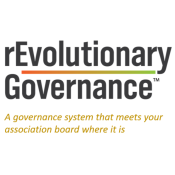
Building Volunteer Bench Strength
One of the biggest challenges all associations face is building volunteer bench strength.
An item included on the Leading Associations Board Health Assessment is: “We have a deep volunteer leadership pool to draw from for future board members.” Few organizations completing the assessment rate a top score on this item. Very few organizations have more volunteers than they know what to do with. In fact, it is usually quite the opposite.
That said, often the problem is not a lack of available talent, but a failure to tap into the available talent. Organizations simply have no system in place for identifying, recruiting, and developing volunteer leaders.
The board should also consider – are the current volunteers and/or staff taking on too much, not leaving opportunities for others to step in? Is the 80/20 rule (80% of the work being done by 20% of the people) by necessity or by choice?
Do You Have a Volunteer System?
A volunteer system, i.e., written processes for volunteer recruitment, training, accountability, and recognition, should be put in place as a key part of building volunteer bench strength.
Recruitment means more than just finding new members for the association. There should be written processes built around how to join the organization, how to become involved, how to take a leadership position, and ultimately how to move into a governing role.
The system need not be complex. Most volunteers engage in a leadership role for one simple reason – someone asked. Thus, a system should be established to make sure that the ask takes place – by design, not by chance.
Succession Planning
Succession planning is an intentional system to recruit, develop and replace volunteer leaders. A leader’s first responsibility is to develop a person to replace him/her.
Thus, the top source for recruiting new leaders is current leaders. Establish a process for current leaders to identify potential successors, such as a succession planning questionnaire. Key questions on the succession planning questionnaire, which should be given to every volunteer, no matter how large or small their role, include:
- What positions would you like to be considered for?
- What are your 2- or 3-year leadership goals?
- What experience do you bring to the organization?
- Who else would you recommend for a leadership position?
Ensure every volunteer assignment ends with determining “what’s next for you?” Your succession planning system should assure that this question is asked of every volunteer. Do not wait for volunteers to request greater involvement.
Shorten the Ladder
Many organizations have a tradition of rotating through the chairs or a “do your time” culture regarding leadership advancement. For example, no one can serve as board chair who has not first served as a committee member, then committee chair, then a director on the board, then an officer, then specific offices in a specific order, eventually becoming the chair. Because of the length of the various terms, the entire process may require a decade or more of service.
Shorten the leadership ladder. Most associations are struggling to get younger membership. The current generation is seeking leadership opportunities now. They are not as open and willing to “do their time” as previous generations were. If you want to appeal to these age groups, it is probably a good idea to move them into leadership quickly – including top leadership – to bring their perspective to the organization.
Clinging to tradition is one of the greatest inhibitors of association development. Pay attention to whether long-time volunteers or staff are either consciously or inadvertently excluding members seeking to engage. . . and make every effort to involve new and younger members.
Other Ideas for Building Your Bench
Here are some additional thoughts on building your volunteer corps.
- Break Larger Roles into Smaller Components: look for ways to break out components of a position into separate volunteer roles. For example, instead of having one volunteer who handles identifying speakers for all events, have a different speaker recruitment volunteer for each event. This serves two purposes: 1) it lightens the load of a key volunteer and 2) creates more bite-sized opportunities for volunteers that might not have time to volunteer year-round but are willing to help with a specific project or activity.
- Offer more ad hoc and Project Based Opportunities: Standing committees limit your volunteer pool. Why? Not everyone is willing to sign up for a one or two-year (or more) commitment. Ad hoc roles – reviewing awards reports for a few hours once a year, for example – and project-based roles like editing a chapter in an association publication may be attractive to some people that want to get involved, but either cannot or will not take on a long-term commitment. Something as simple as volunteering to post on social media during a conference is valuable to the organization but also gives a member an easy opportunity to become engaged.
- Increase Responsibility: Highly dedicated volunteers evolve through roles of increasing responsibility. To engage emerging volunteers, first identify small, ad-hoc opportunities (see the previous bullet). After an emerging volunteer either expresses interest in more involvement or agrees to take on additional responsibility, you can offer a greater role.
- Team leadership roles are often popular, such as Conference Co-Chairs. Co-chairmanship expands opportunities to lead, ensures continuity with a staggered term, and lightens the load for high-responsibility positions.
- Volunteers to Manage Volunteers: Create a volunteer-based volunteer coordinator role. Volunteers prefer to be asked by and respond better to current volunteers.
A lot of organizations say they cannot find enough volunteers because everyone is so busy today, and members’ attention is drawn in too many directions. I contend that today’s busyness and distraction create an opportunity to increase your volunteer base – by offering more but smaller and easier to manage volunteer roles.




